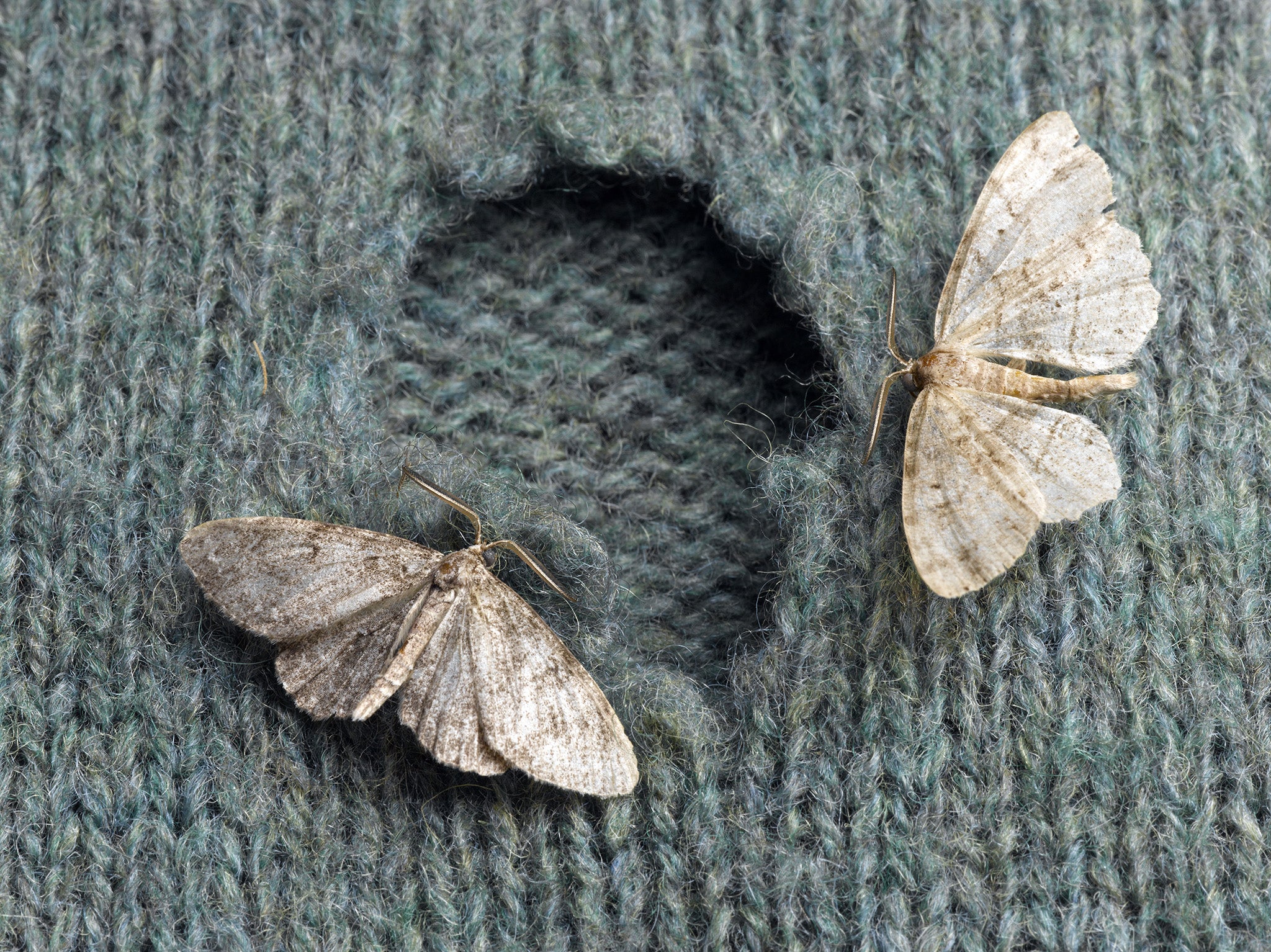Moths are devouring clothes at record rate due to mild winter and early spring, experts warn
Call-outs to pest controllers have more than doubled in the UK between February and March

Your support helps us to tell the story
From reproductive rights to climate change to Big Tech, The Independent is on the ground when the story is developing. Whether it's investigating the financials of Elon Musk's pro-Trump PAC or producing our latest documentary, 'The A Word', which shines a light on the American women fighting for reproductive rights, we know how important it is to parse out the facts from the messaging.
At such a critical moment in US history, we need reporters on the ground. Your donation allows us to keep sending journalists to speak to both sides of the story.
The Independent is trusted by Americans across the entire political spectrum. And unlike many other quality news outlets, we choose not to lock Americans out of our reporting and analysis with paywalls. We believe quality journalism should be available to everyone, paid for by those who can afford it.
Your support makes all the difference.Moths are munching their way through clothes and carpets in record numbers because of the mild winter and early start to spring, say experts.
Call-outs to pest controllers more than doubled in the UK between February and March, increasing by 103 per cent on the same period last year.
Reported incidents of clothes moth infestation have also risen by a third in the year up to the end of March.
Rentokil Pest Control, which released the figures, said warmer weather was to blame.
David Cross, head of the pest experts' technical training academy, said: "The indoor population of clothes moths has been bolstered by the early onset of spring that we are currently experiencing, and the unusually mild winter that we have just had.
"Outdoor numbers of clothes moths are also doing well, nesting in animal and birds' nests before moving into our homes to settle.
"While we've enjoyed the sun this April, these recent figures suggest it's more likely consumers will experience a moth infestation this month, and throughout the year."
The moths' caterpillar larvae feed on protein found in natural materials such as wool, silk, and fur. Rough edged holes in clothing or bare patches appearing on carpets and rugs are a sure sign of the insects at work.
Higher temperatures are known to accelerate the moths' reproductive cycles, making wardrobe invasions more likely.
When breeding conditions are favourable, the insects can produce three generations per year.
Clothes moths are much less active in winter, spending the colder months as pupae in dark, undisturbed places in our homes.
As the days become longer and warming the moths are encourage to emerge from their hiding places and reproduce.
Mr Cross said: "Freezing clothes or having them dry cleaned are practical methods of pest control when dealing with contained populations of moths on infested items. However, if you can count five to six moths in a room then it's likely you're experiencing a serious infestation, and I recommend that professional help is sought."
Clothes moth larvae are about a centimetre long and creamy white with a brown head.
Adult moths are 6-8mm long and have straw-coloured wings with no markings.
"They are easily identified, typically running rather than flying away," Mr Cross added.
PA
Join our commenting forum
Join thought-provoking conversations, follow other Independent readers and see their replies
Comments